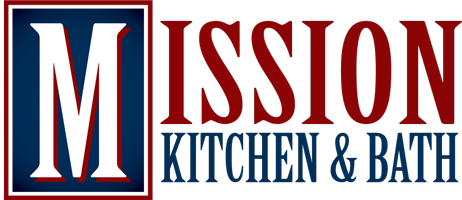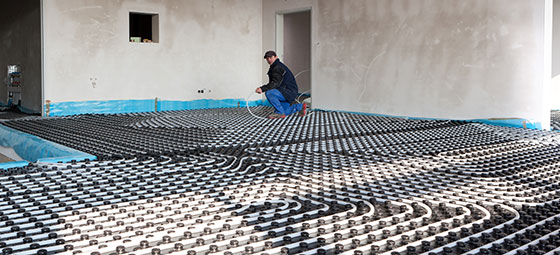Winter is right around the corner and with it comes frigid temperatures. Nothing is quite as jarring as stepping out of a cozy bed or a steamy shower onto an icy floor first thing in the morning. But radiant heat flooring from Mission Kitchen and Bath can cover your floors with an even blanket of heat that will keep your toes toasty from the time you get up until the time you go to bed.
Radiant heat flooring supplies heat through hot water tubes or electric wires installed beneath the flooring. Hydronic radiant heat runs hot water through the tubes beneath the floor. It can use gas, propane, oil, solar energy, or geothermal energy as the heat source, making it very energy efficient. Electrical radiant, while not as efficient, is more appropriate in certain applications.
Radiant heat flooring offers a number of benefits over forced air heating systems:
- It is up to 40 percent more efficient than forced air systems.
- Radiant heat flooring adjusts as heat needs change throughout the day, keeping the room at a steady, warm temperature all day.
- Because it doesn’t use ducts, there is no heat lost.
- Radiant heat flooring doesn’t blow dust and allergens into the air.
- There is no dryness and less static electricity that is associated with forced air systems.
- Radiant heat flooring is quiet
- Radiant heat keeps the temperature uniform throughout all rooms where it is installed, unlike with forced air where the temperature can vary dramatically from room to room.
- Radiant heat keeps the warm air down low where you are, unlike forced air that allows the warm air to rise to the ceiling, leaving you with cold feet.
- It can increase the retail value of your home.
- Because the radiant heat is absorbed into the muscle tissues, it helps improve joint and muscle flexibility, reduces swelling, and promotes improved circulation.
Radiant heat flooring can be a great addition to any room. In the bathroom, radiant heat flooring creates a soothing, spa-like atmosphere. Installing radiant heat flooring on your first floor can add warmth to your common living spaces like the kitchen and living room. Basements are notorious for being cold since heat rises to the higher levels of your home. Adding radiant heating in the basement will increase comfort and expand your usable living space.
Radiant heat flooring installs easiest in new construction homes but it can be retrofitted to an existing home. Ideally, radiant heat flooring is placed above the subfloor, but in a retrofit this will raise the floor a couple of inches, which may cause issues with doors and appliances, and may need to be installed under the subfloor instead.
It can be used effectively with several types of flooring. Tile is the most common and most effective flooring material for radiant heat flooring because it conducts heat well and adds thermal storage. Vinyl and concrete flooring also work well. Hardwood flooring work well if the radiant heat is properly installed and temperature controls are put in place to prevent the wood from warping. Certain types of carpet work well with radiant heat flooring. Avoid thick carpet and thick or sponge pads that trap heat. Opt instead for thin carpet and dense padding.

